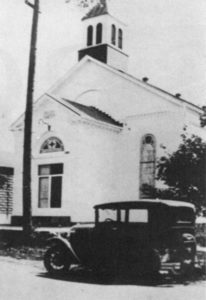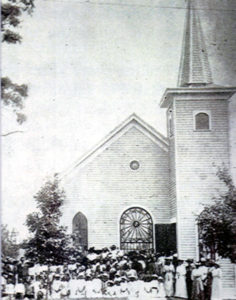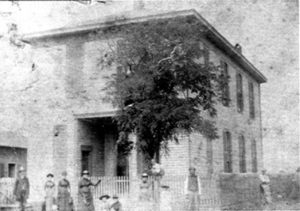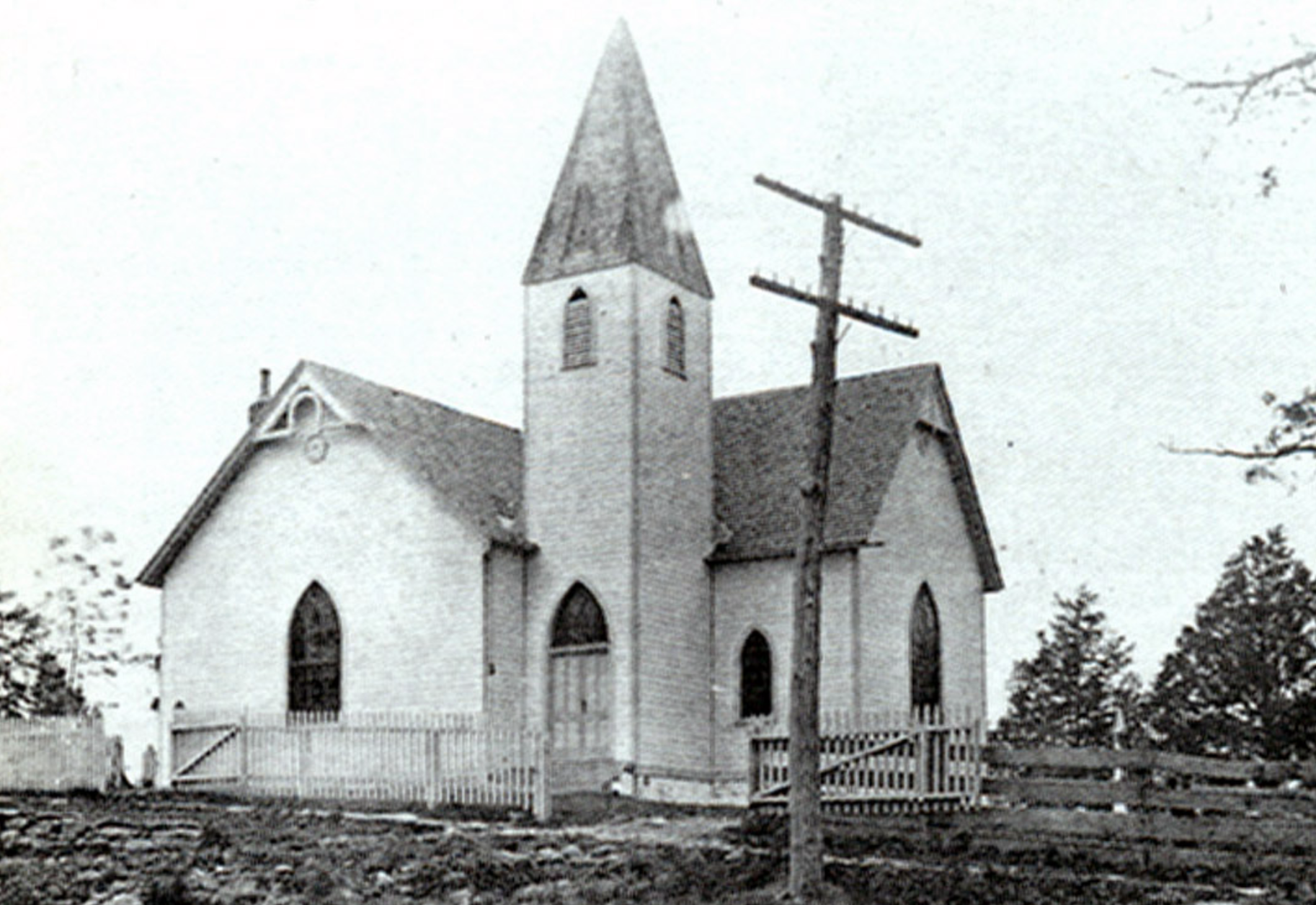Jeffersontown Has a Rich Local Church History
Writer / Beth Wilder
Photography Provided
Settling a new land in the late 1700s had to have been a daunting task for those few who were willing and brave enough to make the trek into unknown territories. Many of the pioneers of Jeffersontown left behind families and ways of life that were far more comfortable and secure than what was facing them on their trek westward, into an unknown land still suffering from Indian attacks. The early settlers of Jeffersontown brought with them not only a great deal of courage and strength of will, but also the reassurance of their unfailing religious beliefs. 
At a time when constructing one’s own house was an enormous task, especially coupled with the daily chores of farm life, building churches was not high on the list of priorities. Still, religious beliefs and practices were of extreme importance to the early settlers of Jeffersontown, and formed the foundation for how they conducted themselves on a daily basis. Church was important to them, even if there were no designated buildings in which to worship. Consequently, the earliest congregations met in the homes of various members, where itinerant preachers and circuit riders (pastors for the Methodist church who served a given area) would conduct services.
The earliest churches in the area were Chenoweth Run Baptist, founded in 1792 and deeded land for a building in late 1799, as well as the German Lutherans and German Reformed Presbyterians, who held services beginning about 1795 in the barn of Jacob Hoke, near the current viaduct on Taylorsville Road. The earliest church on the town square was a small log structure built at the corner of Watterson Trail and Shelby Street, where the German Reformed Presbyterian Church Cemetery is now located. The 1799 deed for this lot, sold to the German Reformed Presbyterians, marks their separation from the German Lutherans.
Since money was scarce for the newly formed congregations scattered throughout the area, four of them decided to build a communal structure that could be shared by all, with each church appointed one Sunday per month for services. Although Philip and Peggy Zilhart did not transfer ownership of lot 35 to the trustees of the churches until 1819, the Union Church occupied the site by 1816, and was known as the “Brunerstown Congregation,” after Abraham Bruner, who purchased the land and sold lots on what became the town square. Members of the Lutheran, Presbyterian, Methodist and Baptist churches banded together and molded bricks for the church on the premises, which was common practice at the time, but since the bricks were not fired properly, the building proved to be worthless and had to be reconstructed with stone in 1820.
The Presbyterians were entitled to use the church on the first Thursday through the following six days every month, the Lutherans the second, Methodists third and Baptists fourth. When the building was not occupied, it was free for any religious societies to use.
As congregations expanded and grew wealthier, they were able to purchase land and erect their own churches in other locations. The first congregation to leave the Union Church was the Lutherans, who were deeded lots 28, 29 and 30, next to the original lots purchased by the German Presbyterians. On September 29, 1833, they dedicated the cornerstone for their very own brick building, which was used until 1895. It was then torn down and a new frame building was constructed upon the old foundations, where Thoroughbred Hall now stands on Watterson Trail. By 1854, the church was known as St. Paul’s Evangelical Lutheran Church, and later as Christ Lutheran Church. On October 9, 1960, groundbreaking services were held for a new location at Taylorsville Road and Six Mile Lane.
Black residents had always been members of the regular congregations in Jeffersontown, worshipping in the loft of the Union Church while the white parishioners worshipped on the main floor. In 1833 Henry Adams, who was a minister of the biracial First Baptist Church of Louisville, formally organized the black Baptist members of the Union Church and installed Reverend Henry Summerfield, a former slave who had bought his freedom in order to preach the gospel, as the first pastor of the reorganized black Baptist congregation. In 1848, a new facility called the “Colored” Union Church was erected a few blocks south on Old Taylorsville Road to house the black Baptists and Methodists.
 After all of the congregations eventually left the Union Church to set up new buildings of their own, the black Baptists wished to separate from the black Methodists and return to their former location in the old Union Church. “Jeffersontown Colored Baptist Church” bought the decrepit property in 1876 for $175, and the land was deeded over to them in 1877. Throughout the years, various new buildings replaced aging and outgrown structures as the size of the congregation increased at what would become known as First Baptist Church of Jeffersontown.
After all of the congregations eventually left the Union Church to set up new buildings of their own, the black Baptists wished to separate from the black Methodists and return to their former location in the old Union Church. “Jeffersontown Colored Baptist Church” bought the decrepit property in 1876 for $175, and the land was deeded over to them in 1877. Throughout the years, various new buildings replaced aging and outgrown structures as the size of the congregation increased at what would become known as First Baptist Church of Jeffersontown.
The next congregation to leave the Union Church was the “Old School Presbyterian Church,” which moved to the ground floor of the Masonic Lodge constructed at 10411 Watterson Trail in 1866. In 1870, the local Presbytery wanted them to merge with adjacent churches, but the Jeffersontown church deferred action and eventually dissolved. A new Presbyterian Church was formed in 1885, and they constructed a sanctuary at 10411 Taylorsville Road. In 1966, a larger church was constructed next to the old building, but that church closed in 2012 due to lack of membership.
Although no records exist prior to 1845 for the original Baptist congregation that used the Union Church, it is known that they moved into the lower portion of the Masonic building on Watterson Trail around 1871, after the Presbyterians moved out. They remained there until 1926, when they constructed a brick building at 10011 Taylorsville Road. Fire destroyed that building in 1937, forcing the members to meet in its basement until they could build a new limestone structure on top of it in 1949. Although the congregation went by several different names after its founding, they were known as both First Baptist Church and Jeffersontown Baptist until around 1956, when, due to confusion in mail service, they officially changed their name to Jeffersontown Baptist Church, and opted to allow “First Colored Baptist Church” to thereafter be known solely as First Baptist Church of Jeffersontown.
The Methodists were the last congregation to leave the Union Church when they purchased land at 10219 Taylorsville Road for a church of their own in 1860. That building, constructed of bricks made on-site in 1864, was razed in 1967 to make way for a more modern facility. In 1972, a memorial bell tower was constructed in front of the building to house the bell cast in 1888 for the old church sanctuary.
At times referred to as the Black Methodist Church, St. Paul Methodist Church was formed in 1877. Following the death of her husband in 1886, Rosa L. Leatherman sold town lots 94 and 95 to the Jeffersontown Methodist Episcopal Church, and the African-American congregation constructed the frame church that same year. Around 2004, the congregation left the building at 10525 Old Taylorsville Road, and a few years later it was saved from destruction by the Swetnam family, who renovated it into a lovely wedding chapel.
Aside from St. Edward Catholic Church, which was established in 1878, the only other historic congregation housed on the town square was Jeffersontown Christian Church. The original building was constructed on lot 52 in 1839, but it burned in 1878 and a new sanctuary was constructed on the same location at 10408 Watterson Trail. The Christian Church opened its doors to house displaced people from Louisville during the 1937 flood. In 1961 that building was sold to the Moose Lodge and a new church was constructed at 10631 Taylorsville Road.
Of course, many other churches have sprung up in Jeffersontown through the years, adding to the diversity of faith and foundations to our city. It is amazing to note, however, just how important these historic churches have remained throughout time, woven into the very fabric of Jeffersontown.





